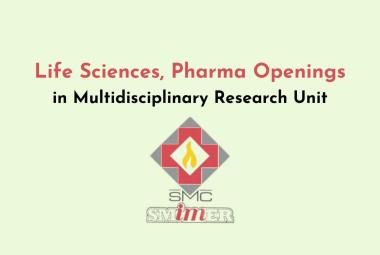About Author: Tapan Behl*, Neha Chauhan, Harlokesh Narayan Yadav
Department of Pharmacology,
I.S.F. College of Pharmacy,
Moga - 142001, Punjab, India
Reference ID: PHARMATUTOR-ART-1063
Abstract
Animal testing had been in practice from the last many decades. Animal testing and experimentation leads to killing and cruelty of hundreds of thousands of animlas each year. Misconception is so much about the general public that the use of animals is considered mandatory for meeting the learning objectives. The existence of methods like In vitro pyrogen test, embryonic stem cell test, carcinogenicity test etc. has paved the good pathway for the usage of alternatives to animal experimentation. Alternatives to animal experiments can only be put into practice by the general awareness of the public about the animal welfare, the tediousness of the animal methods, and the expensive and time consuming nature of these methods. In this review a various alternative testing methods are discussed so that pavement should be directed into a meaningful research, healing and protection and is mandatory for restoring faith and respect in medical profession. This review will provide an insight on the various alternatives to animal experimentation so that a path can be lighted which would be terror free and without dragging the animal to a life of horror and unbearable pain.
[adsense:336x280:8701650588]
Introduction
The term “Alternative” necessifies the choice that exist between two closely and mutually exclusive possibilities. Alternatives to animal experimentation is a broad term that encompasses the diminished use of animals for the benefit of medical work without compromising the quality of scientific work. [1] Long before the centuries, animals are playing an mandatory pavement for the development of biomedical sciences. [4] In higher education system animals are used to teach anatomy, pharmacology, physiology and psychology. Starting from the 17th century, the usage of animals for experimental purposes drags the matter into great issue of controversy. Animal testing is an emotive subject that mutilates and kills thousands of animals each year. [13] But a large question exists in front of all biologists or experimenters that whether this strategy of mutilation or killing is important as other options exist? The answer will be unequivocally, No. Whats the sake of doing those practices that is just carried out in the name and fame of science and progresss and being so emotive. [3] But the scenario seems to be changing. In the era of great technologies and facilities the concern of public about animal use, the birth of economical reasons, the awakement about the ethical issues, number of alternatives came into picture that gives the same quality and quantity of the results as do the animal usage and proved to be better weapon for ameliorating the devastations of cruelty and harm suffered by animals.
ANIMALS IN EDUCATION:
Education system employs the considerable use of animals inspite of the presence of wide array of alternatives to animal experimentation.. The general misconception of public of attainment of learning objective solely by animal experimentation turns a major villain factor for the unnecessary use of animals in scientific world. [2] The usage of animals in laboratory classes can be summed for the following reasons:
Gaining the practice over the animal handling skills, dissecting skills and generic skills;
Enhancement of new knowledge by doing animal experimentation and adding the new facts and data to the existing knowledge;
Advocating the methodology of scientific research;
Focussing the diversity if complex systems involced;
Implicating the dynamic processes of life;
Development of responsible behavior towards animal experimentation..
The journey of drug development begins from its birth in chemistry laboratory and passes through many stages in which the drug has to constantly pass in all the stages for its therapeutic outcome in humans. Animals are being used for testing irritancy, penetration, senstization, mutagenicity, phototoxicity, photosenstivity and acute toxicity studies. The use of animals has been directly related to students future profession.. Furthermore the students should be informed about the reasons for the usage of animals and ethical and legal aspects of animal experimentation. The objective of the education should be focussed on giving the knowledge about the well being of animal with minimum cruelty and should meet the demands and context of experiment. The animal should be handled with all possible care so that it does not suffer any pain and due regard is paid for furnishing the quality, health and well being of animal colony. In todays world scenario, the tradition and animals goals have changed in such a way that the animal classes are replaced by animal free classes, without affecting the skills and learning of students. Enormous transformations have been made in the field of medical sciences for the testing of animal activity. Whatever happens behind the closed doors all cruelty, pain, sufferings felt by animal that cannot be relieved are not focused to the public. Current standards dictate the animal use to obsolete level. [7] The scientific and legislative authorities and animal rights have been demand testing the abolition of animal experiments in the laboratory advocating the use of some alternatives. The feeling that advocates that animal cannot feel pain, sufferings and all the distress due to lack of consciousness should be completely rooted out as it is proved on scientific background that they do feel pain like humans. Animal right and welfare organizations advocates that there is no fun in using the old animal models that are not reliable in giving results and are poorly regulated inspite of the presence of various computer software programs that clearly define the exact intricate relation of the various cells , molecules, cells and organs all that really make up the essence of research to utmost level . In todays world, there are several scientific methods of experimentation that can be used to replace experimentation on animals. [16]
ALTERNATIVES TO ANIMAL TESTING:
The broader considerations of the various legislations during the last few years, advocates not to use the animals in the classroom studies as it brings the negative psychological impact on students furthermore leading to desenstisation. and frustration due to unsucessful experiments. [8] Russell and Burch in 1959 gave the concept of “THREE R’s” i.e. reduction, replacement and refinement that contribute a lot in minimising the animal usage in the field of drug development and testing. [14]
REDUCTION:
The term ‘reduction’ means minimisation. Reduction is a strategy employed in animal experimentation in context to decrease the number of animals used for a specific study. It helps the researchers to pool the appropriate data from fewer number of animals that might be effective in predicting out the accurate results that can be streched out and with the intent of obtaining maximum inormation from fewer number of animals. [21]
[adsense:336x280:8701650588]
REPLACEMENT:
Replacement simply means substitution. It is the concept of introducing methods that require the participation of animals. The non- animal methods are being given priority over the animal methods when one has the same vision of doing experimentation. [15] Replacement may be relative where animals are required to provide cell, tissue or organ, but experiments are conducted on in vitro on perfused organs, tissue culture, tissue slices and cellular and subcellular components.Thus it would not be wrong to interpretate that of all the three ‘R’s, the concept of replacement is the most smartest one as it easily substitutes one method over the other without compromising the quality of results. [18]
REFINEMENT:
Refinement means ‘modification’. It is the approach of using methods that ameliorate the pain experienced by animal along with the supression of all the sufferings and distresses that animal feels during animal experimentation and full emphasis given on the welfare and care of the animal. It is an approach to minimise the incidence of severity of inhumane procedures that may have to be applied unavoidably to animals in certain experiments.
Thus the combined effect of all these three ‘R’s would significantly encourage the researchers to follow the direction that directly illuminates the path that leads to non- suffering to the animals. Alterrnatives to animal experimentation can be classified as follows (Jukes and Chiuia, 2003): [9]
(3D-) Models, mannequins and mechanical stimulators;
Film and interactive video;
Computer simulation and virtual reality;
Self expetrimentation and human studies;
Plant experiments;
Observational and field studies;
Materials from slaughterhouses and fisheries;
In vitro studies on cell lines;
Dead animals from animal friendly and ethical course;
Clinical Practice.
Two major alternatives to in vivo animal testing are in vitro cell culture techniques in silico computer simulation. The mainstake of these methods relies on the fact that they use the data from previously performed experiments and presence of animal derived products like serum is mandatory for the cultured cells. Furthermore, these methods cannot provide an accurate linkage of the diverse interactions of the living systems as that was possible only with the animal experiments use. The use of humans for testing the skin irritancy or pyrogenicity studies by donated human blood can serve as a fruitful alternative that does not need criticism. Microdosing method can also serve as an effective alternative employing the administration of the dose below the level that is expected to produce the whole body effects.
Some of the alternative non- animal tests are as follows:
In- vitro Pyrogen Test:
The In – Vitro Pyrogen Test is an effective potential for testing the pyrogenicity of the complex samples but must undergo validation and refinement so as to include this test in Pharmacopoeias. Limulus amoebocyte lysate (LAL) test, monocyte activation test (MAT), etc. can serve as an alternative to animal rabbit pyrogen test. The pyrogenic contamination will result in release of inflammatory mediators from the human leucocytes. The Limulus Amebocyte Lysate (LAL) is FDA-licensed alternative to Pyrogen Testing and is based on the extracellular coagulation of blood of horseshoe crab Lumulus polyphemus by Lypopolysaccharides. [1] The monocyte activation test (MAT) uses mononuclear cells (e.g.. monocytes) obtained from human volunteers or from blood bank and is used for detection of pro-inflammatory and pyrogenic contaminants whose presence is notfeasible with Rabbit Pyrogen Test or LAL Test. [4]
Embryonic Stem Cell Test:
The Embryonic Stem Cell Test is proved to be an effective altenative for the assessment of embryotoxic potential of drugs in an in vitro system. The placement of the D3 embryonic stem cells in ‘Hanging Drop’ culture results in formation of contractile areas in the Embryonic bodies. The embryotoxic potential of of test compound is assessed by the capacity of stem cells to develop into specialised contracting heart calls in vitro within 10 days. The indication of the positive result is directly an alarm for classifying the chemical into hazardous substance for the development and reproduction while the negative results need futher refinements for validation. The test reduces the time and cost as that was needed with animal experimentation for embryotoxicity tests.
Local Lymph Node Assay (LLNA) for Skin Penetration:
LLNA is based on the principle that when a test compound is applied on skin ,it is considered as a senstiser and there is proliferation of lymphocytes by the lymph node as is measured by radioactive labelling.The proliferation is proportional to the dose applied that is a simple method of obtaining an objective, quantitative measurement of senstisation. This test offers an effective approach for hazard identification which is greatly in the side of animal welfare. The ratio of proliferation in the treated group to the vehicle control group is taken at least three times before consideration of the test substance as a skin senstiser. [12]
Clinical Patch Test on Human Volunteers:
Clinical patch test offers the advantage of direct relevance to humans. This test is performed for the assessment of non-corrosiveness of chemical before introduction into clinical patch test. [5] The proper conductance of the human patch tests offers an acceptable alternative to animal testing for skin irritation or skin senstisation. It should be taken into account that human testing is of value in the risk assessment process, but is performed only for the sake of confirming product safety. This test leads to an indication that application of chemical would not cause any irritation or allergic skin reaction.
Neutral Red Uptake (NRU) Assay:
The Neutral Red Uptake Assay (NRU) is a quantitative test which appears an incredible alternative for eye-irritancy test having a broad biomedical and environmental applications. [6] The exogenous chemical cause irritation in cornea , conjuctive epithelium and endothelial cells. It is an in vitro alternative to the Draize rabbit eye test that screens the chemical for eye irritation potential. NRU assay measures the ability of test substance to inhibit the uptake of dye serving as a marker of cll viability. The extrapolation of Dose response curves gives a toxicological end-point known as NRU50 or IC50 value which is inhibition of neutral red uptake of the test substance as compared with control samples. [20]
Carcinogenicity Test:
Cell transformation assyas have been used for the assessment of induction of carcinogenicity of a compound through non- genotaxic.mechanisms. [10] The models do not provide a definitive link for the assessment of mechanism or mode of action however additional research is needed. The carcinogenicity test has many disadvantages as it gives birth to problems regarding variation in species, unrealistic doses, involvement of higher costs and long duration of time.
Acute Toxicity Test:
Acute toxicity assess the precipitation of adverse effects that comes from either single exposure [22] or multiple exposure of substance. [23] Animal is fed with the chemical and is observed for any poisoing effect. LD50 is measured till half of animals die. [17] The commonly used species are rat and mice but rabbits, guinea pigs or dogs can also be tested. Furthermore the availabilty of the computer software packages are of great help in prediction of acute toxicity from the test compounds chemical structure.
Repeated Dose Toxicity Test:
The extent to which toxicity is produced by ingestion of a substance depend on the absorption, distribution, metabolism and excretion by the living systems. The era of computerized biokinetic modeling enables the researchers to estimate the distribution and availability of a chemical through various organs or tissues of the body.
Developmental neurotoxicity test (DNT):
The tests that leads to the reduction of the cost and the number of animals,allows the screening of a diverse number of chemicals and provides reliability of data so that chemicals can be used for further targetted testing animals are as follows:
1. Use of alternative species with conserved neuro developmental process.
2. In vitro cell culture model usage.
3. In silico model development.
ADVANTAGES OF ALTERNATIVES TO ANIMAL EXPERIMENTATION
1. Animal systems are mostly different from human system, animal experimentation can be very inaccurate and potentially dangerous to humans. [11]
2. The difference in anatomy, physiology and biochemistry among various species unables the extrapolation of the animal data in humans.. Furthermore the best matched species for man is man.
3. Non animal tests are more cost effective and practical.
4. The lacking of formal validations in animal tests leads to development of various uncertainities when extrapolation to humans.
5. Animal tested products leads to creation of unnecessary and harmful enviornmental waste and pollution.The process of manufacturing cruelty free products is not at all damaging in this regard as it does not involve animals and therefore does not create such waste.[19]
6. The animal testing results can be manipulated by the researchers thereby hide the actual fact from the humanity however the same problem can be overcome with the use of non- animal tests.
CONCLUSION:
Substantial progress has been done in the advancement and utilisation of alternative techniques from the last two decades.The regulatory agencies accept these tests only if they have been evaluated either independently or through the interlaboratory evaluation.The Three R’s has widely promoted the use of alternative to animal experimentation.The lust of the industry for the alternative techniques is widely mediated through the general awareness of the public about the animal welfare, the realization of the tediousness of the animal tests, expensive and more time consuming nature than in vitro technologies.Moreover it is imperative and hence its the need of the today to end all animal experiments without delay thus introducing the way to change the pavement towards meaningful research, healing and protection and thus is mandatory for the restorance of the faith and respect in the medical profession.Thus a great question needs to be answered always that “DOES THE BENEFIT HUMANS OBTAINING THROUGH ANIMAL TESTING JUSTIFIES THE HARM THAT HAS BEEN CAUSED TO ANIMALS THAT DRAGS THEM INTO A WORLD OF HORROR, TERROR AND UNBEARABLE PAIN ????????????
References:
1. “Vivisection FAQ, British Union for the Abolition of Vivisection; “The Ethics of research involving animals,” Nuffield Council on Bioetics, section 1.6.
2. “Use of Laboratory Animals in Biomedical and Behavioural Research,” Institute for Laboratory Animal Research,The Natinal Academies Press,1988.
3. “Introduction”, Select Committee on Animals in Scientific Procedures Report, United Kingdom Parliament.
4. F Freeberg , J Griffth , R Bruce & P Bay , “Correlation of animal test methods with human experience for household products,” Journal of Toxicology-cutaneous and Ocular Toxicology, 1984; 1: 53-64.
5. G Nixon , C Tyson & W Wertz , “Interspecies comparison of skin irritancy,” Toxicology and Applied Pharmacology, 1975, 31: 481-490.
6. Kaufman, R. Stephen , “Problems with the Draize Test.” Americans for Medical Advancement.
7. R Sharpe , The Cruel Deception; The Use of Animals in Medical Research.
8. RC Garner Genotoxicity testing. In: Animals and alternatives in toxicology. Balls M et al Macmillan:London, 1991.
9. ECVAM Alternative (non-animal) methods for chemical testing:current status and future prospects.ATLA 2002; 30 Suppl. 1: 84-85.
10. Vander Laan JW. Current status and use of short/ medium- term models for assessment of carcinogenicity of human pharmaceuticals: Regulatory perspectives. Toxicol Lett 2000; 112-113: 567-72.
11. Animal Welfare Act as Amended (7 USC, 2131-2156).[Online]. Available: nal.usda.gov/awic/legislat/awa.htm.[May 16, 2000].
12. mattek.com/pages/products/epiderm.
13. wikipedia.org/wiki/animal_testing.carbone2004,P-94.
14. B. Ekwall et al.,"Alternatives to Laboratory Animals 1998 ”, 26 Suppl.2 , 617.
15. Goldberg, A.M. (2007) The first Indian Congress on Alternatives to the Use of Animals in Research, Teaching and education, Chennai, India.
16. J.W. Grisham, Smith Grisham , G.J.,"Pharmacological Reviews,” 1984; 36 Suppl , 151 S.
17. E.M . Sheers , B.A. Ekwall and P.J. Dierickx 2001," Toxicology In Vitro,” 2001; 15, 153.
18. H. Spielmann et al ,"The first Indian Congress on Alternatives to the Use of Animals in research, Teaching and Education, "Chennai, India 2001.
19. D.W. Connell , R.D. Braddock and S.V. Mani," Science of the Enviornment ,"Suppl.2 1993; 1383.
20. Y Kajiwara and S. Ajmi ,"Toxicology In Vitro, "2003; 17, 489.
21. McBride, J. Et al., "Alternatives to Laboratory Animals ,"1993; 27 Special Issue,416.
22. "The MSDS Hyper Glossary: Acute toxicity". Safety Emporium.
23. IUPAC, Compendium of Chemical Terminology, 2nd ed. (the "Gold Book") (1997). Online corrected version: (2006–) "acute toxicity









